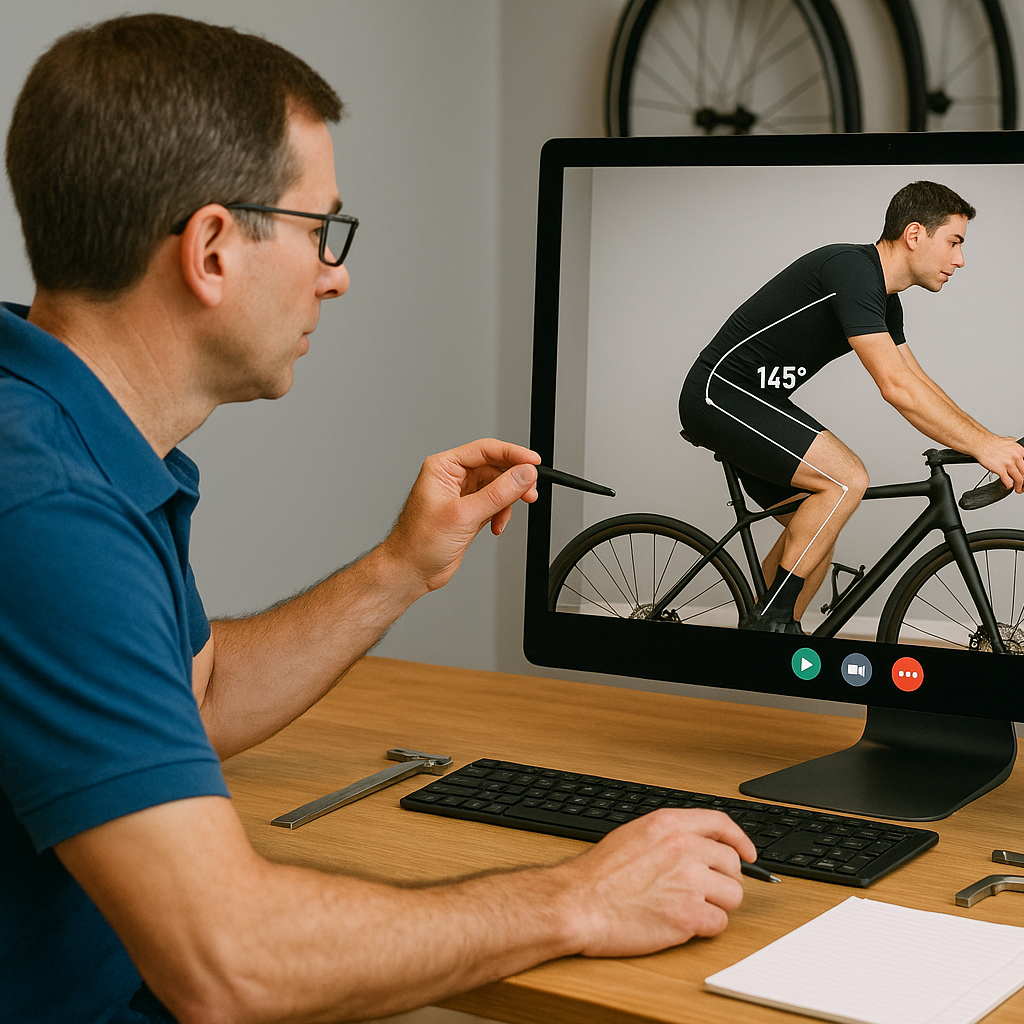
Why a Professional Bike Fit Matters More Than You Think
Why You Need a Bike Fit Before You Buy That Dream Bike
Let’s paint a quick picture: You just spent $6,000 on your dream bike. It looks slick, it’s loaded with top-tier components, and you’re buzzing to hit the road. But a few weeks in? Your knees ache, your back’s tight, and those long rides you dreamed of feel… kinda miserable.
What went wrong?
Most likely, you skipped the bike fit.
In the world of cycling, there’s one truth that doesn’t get enough attention: fit trumps fancy. If your bike doesn’t fit you, it doesn’t matter how expensive, light, or aerodynamic it is—you’re not going to ride efficiently, comfortably, or safely.
Here’s why a proper bike fit isn’t just nice to have—it’s essential.
1. Injury Prevention Starts with Proper Alignment
Cycling is a repetitive motion sport. That means even slightly off positioning can lead to big problems over time.
Without a proper bike fit, common injuries can creep in like:
-
Knee pain (often from saddle height or cleat misalignment)
-
Lower back discomfort (from incorrect reach or bar height)
-
Numb hands or feet (from pressure issues or posture imbalances)
-
Neck strain (from being too stretched out)
A pro bike fitter takes into account your unique biomechanics—your flexibility, leg length, core strength, riding goals, even past injuries—to dial in a setup that protects your body.
2. A Better Fit = A More Efficient Ride
Here’s the deal: When your position is optimized, you produce more power with less effort. That’s right—a bike fit can actually make you faster without upgrading a single part.
It’s all about:
-
Optimizing your pedal stroke
-
Reducing wasted movement
-
Improving aerodynamics (without compromising comfort)
-
Finding that sweet spot between power and posture
A few small adjustments—saddle position, bar reach, cleat placement—can add up to big performance gains over long miles.
3. Comfort = Consistency = Progress
You can have all the motivation in the world, but if your bike causes you discomfort every ride, you’re not going to stick with it.
A proper bike fit:
-
Reduces fatigue
-
Boosts endurance
-
Makes long rides something to look forward to, not suffer through
And let’s be honest—when riding feels good, you're way more likely to keep showing up.
4. Get Fit Before You Buy That Expensive Bike
This might surprise some folks, but it’s often smarter to get a bike fit before you even buy your bike.
Why? Because a good fitter can:
-
Measure your ideal stack and reach
-
Recommend frame geometries that suit your body
-
Tell you what brands/models will best match your riding style
-
Help avoid buying the wrong size or shape frame
In short: A pre-purchase fit can save you from a costly mistake. There’s nothing worse than realizing that dreamy carbon rig isn’t quite right—for your body or your riding goals.
5. It’s a One-Time Investment with Long-Term Payoffs
Sure, a professional bike fit can cost a few hundred bucks. But compared to the price of a new bike (or medical bills from preventable injuries)? It’s a steal.
Here’s what you’re actually investing in:
-
Longevity in the sport
-
Fewer aches and pains
-
Better performance and faster recovery
-
More enjoyable rides, every time
Whether you're a weekend warrior or training for a gran fondo, a dialed-in fit is the foundation for progress.
FAQs
Q: How long does a professional bike fit take?
Usually between 1.5 to 3 hours, depending on the level of detail and services provided (e.g., motion capture, cleat fitting, etc.).
Q: Should beginners get a bike fit?
Absolutely! Starting with the right fit helps build good habits and prevents injuries from the get-go.
Q: What if I already own a bike—should I still get a fit?
Yes! A fit can still make your current setup way more comfortable and efficient. It's never too late to optimize your ride.
Final Thoughts: Don’t Fit the Bike—Fit the Rider
Your bike should feel like an extension of your body—not a torture device. And that’s what a proper fit delivers.
Before you obsess over grams, gear ratios, or carbon layups, take a step back and ask: Is this bike built around me?
Because when it is? That’s when the magic happens. More miles. Fewer injuries. Better rides. Every single time.
